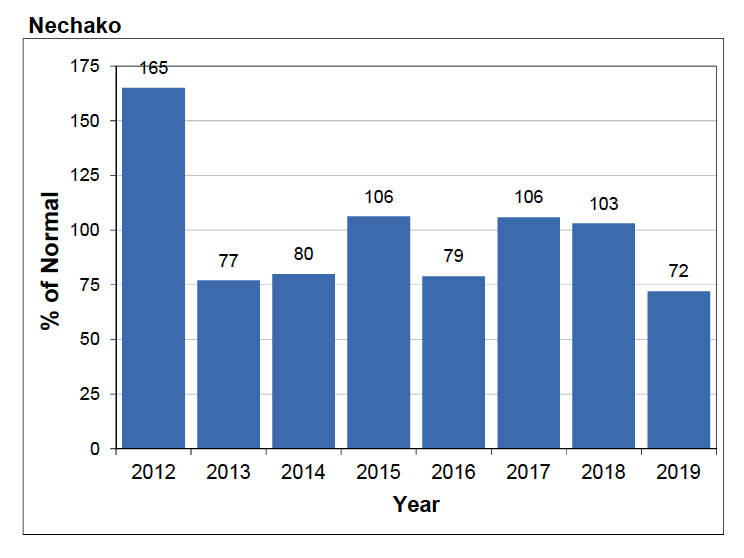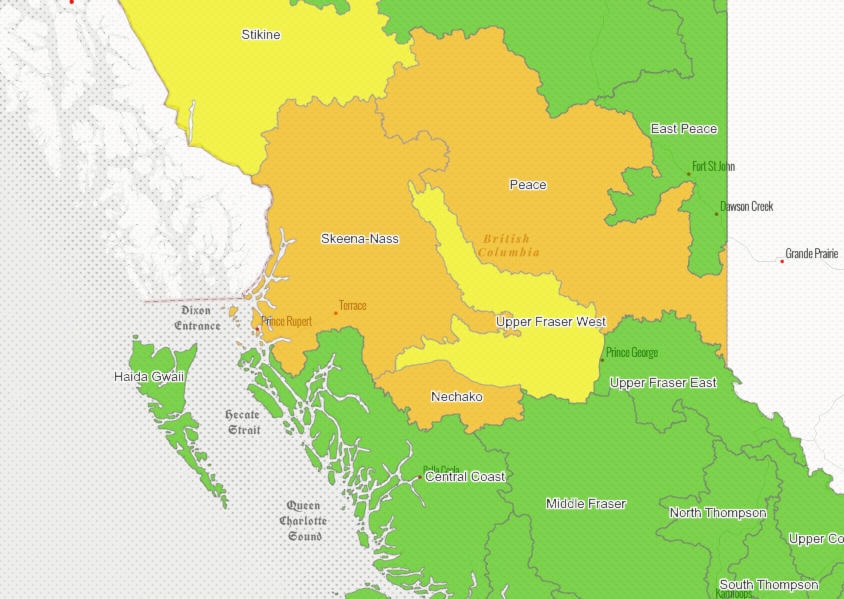Rio Tinto BC Works says it is closely monitoring the levels of the Nechako reservoir that supplies the water for power generation at Kemano Powerhouse.
Spokesperson Kevin Dobbin said in the context of dropping levels of reservoirs across the province to record lows, the company is taking a proactive approach to mitigate the potential risks of low water levels and the impact it could have on BC Work’s operations.
“With almost 65 years of experience managing the Nechako reservoir the current data shows that Rio Tinto BC Works will be challenged to balance the diverse needs of the region due to the sustained very dry conditions. It is something we are monitoring very closely,” said Dobbin.
He said the company has been preparing alternative scenarios “in case there is a need to manage the power generation to ensure a healthy Nechako river and to protect employment in the Kitimat-Terrace region.”
“We will continue to monitor the situation as we prepare for a variety of scenarios,” said Dobbin.
READ MORE: The opposite side of the coin - Rio Tinto prepared for floods
BC Hydro spokesperson Kevin Aquino said while the company has a lot of experience managing reservoir levels in low water years, a dry summer had led to BC Hydro’s reservoirs dropping below normal levels.
“By October, our two biggest reservoirs – Williston on the Peace River and Kinbasket on the Columbia River – reached record seasonal lows. In fact, dry conditions in the Williston basin resulted in four consecutive months of low inflows, with September, October and November being the third, second and fourth lowest in 60 years,” said Aquino.
He said while generating enough electricity as a result of dropping reservoir levels in winter last year was difficult already, it was further challenged after the explosion of Enbridge’s natural gas transmission pipeline north of Prince George, on October 9, 2018.
To compensate for the loss in natural gas BC Hydro was further put under pressure to deliver more electricity to get the province through winter.
“We experienced a record-breaking cold February followed by the driest March on record in parts of B.C. This resulted in more electricity being used than forecasted, and less water remaining in BC Hydro’s reservoirs as demand for power remained high,” said Aquino.
In addition, cold and dry weather delayed the onset of the spring freshet this year.
“However, inflows into the reservoirs started to increase in April with warmer weather and will soon start filling the reservoirs.”
He added that while BC Hydro is predicting higher water flows resulting from climate change over the long term, unpredictable weather patterns are expected to continue in future.
A BC Hydro report titled Generational challenge: How B.C.’s generation system is adapting to extreme weather and unforeseen events found the past 12 months demonstrate how extreme weather in B.C. can impact BC Hydro’s reservoir levels.

